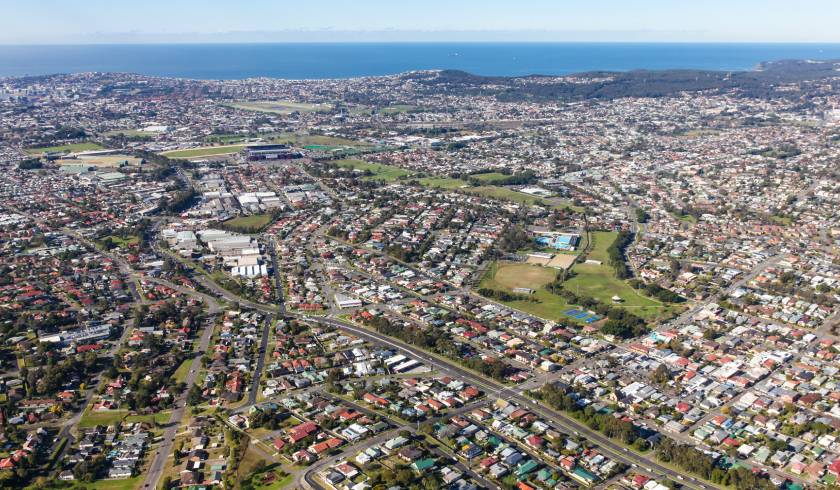The ‘survivorship’ mindset: How to capitalise on NSW rising land values
According to projections from the Australian Bureau of Statistics (ABS), the value of residential land in NSW has reached $2.67 trillion in the financial year 2021.

At the macro level, ABS estimates that the value of residential land in Australia has increased from $4.9 trillion to $6.6 trillion during the same financial year.
Pete Wargent, co-founder of BuyersBuyers, has affirmed the ABS data, saying that the “increase in Australia’s residential land values in 2021 was broad-based, with sharp increases recorded across every state and territory, resulting in the total value of residential land increasing by about a third, which is a remarkable increase given the recessionary conditions we have been through at times”.
Looking back, the face value of residential land has more than doubled in the last eight financial years, Mr Wargent pointed out. However, he also noted that as the population grows, more land would be appropriated and used for residential purposes; therefore, a significant portion of the growth in land values is closely linked to population growth.
BuyersBuyers chief executive Doron Peleg concurred with Mr Wargent, saying that the growth in Australia’s population, aside from fundamentally lower borrowing rates and an increase in household wealth, has been a key factor in growing land values.
Just look at NSW, said Mr Peleg, “where the estimated resident population has increased by around three million over the past four decades, while the average number of persons per household has declined significantly, creating significantly more demand for residential land”.
Due to the current rise in demand for residential land, Mr Peleg is anticipating land value growth to be sustained and, in effect, cause robust capital growth of free-standing houses in established locations and suburbs.
“The recent strength in land values has been driven primarily by coastal and lifestyle locations, as well as prime harbourside suburbs, as buyers have used flexible working arrangements and sought more space over the past two years,” Mr Peleg said.
The ‘survivorship’ investment mindset
Weighing in on the positive outlook for residential land values, Mr Wargent gave home buyers the lowdown on how to make sense of the variables at play.
As points of comparison, he used Warren Buffet’s stock investment principles and Apple’s stock value vis-à-vis NSW’s land value.
“Warren Buffett said that when you’re buying stocks, you should think about buying part ownership of a business. It’s a slightly different proposition when you’re dealing with residential land, because most market participants are buying homes to live in, rather than purchasing purely as an investment for the economic value, although you can apply similar principles,” Mr Wargent started.
Digging further, he mentioned that Mr Buffet also “likes to buy stocks with the assumption that the market could close next day and not open again for 10 years – and that’s not a bad mindset for property buyers to take either”.
Side by side, Mr Wargent cited the ABS data reporting on NSW’s land value of $2.67 trillion in 2021 and the recent record set by Apple as the first U.S. company reaching a market value of US$3 trillion at the start of 2022.
So hypothetically, Mr Wargent alluded that “for the same value of the Apple business today, you could buy all of the residential land in New South Wales and still be left with about a trillion Aussie dollars or so of walking around money”.
Apple’s success is no small feat. However, it was Big Oil and energy, Ford, General Motors, and IBM that dominated the business industry back in 1980. Forty years later, the economic landscape has been dramatically altered substantially away from their dominance, explained Mr Wargent.
On the flip side, the fact that land and property have long-term viability is a major plus for long-term investors. Mr Wargent revealed this “key drawcard for long-term investors in land and property”.
The ‘survivorship factor’
He advises investors to scout for properties using the “survivorship” investment mindset. As it stands, the value of residential land in Australia is already at $6.6 trillion, and this is expected to keep on rising in a decade or more, Mr Wargent claimed.
Thus, this is his forecast: “Property will continue to go through cycles, but well-located residential land in cities such as Sydney and the desirable coastal suburbs of New South Wales will still be in extremely high demand 40 years from now, hence its enduring popularity.”
Still, the BuyersBuyers co-founder asked home buyers to take these great strides in the residential land market with a grain of salt.
Mr Wargent reminded home buyers to research where to buy because “not every property on a large piece of land will deliver strong price appreciation – a forward-looking view and detailed analysis is required to identify sound opportunities in this highly competitive market”.
